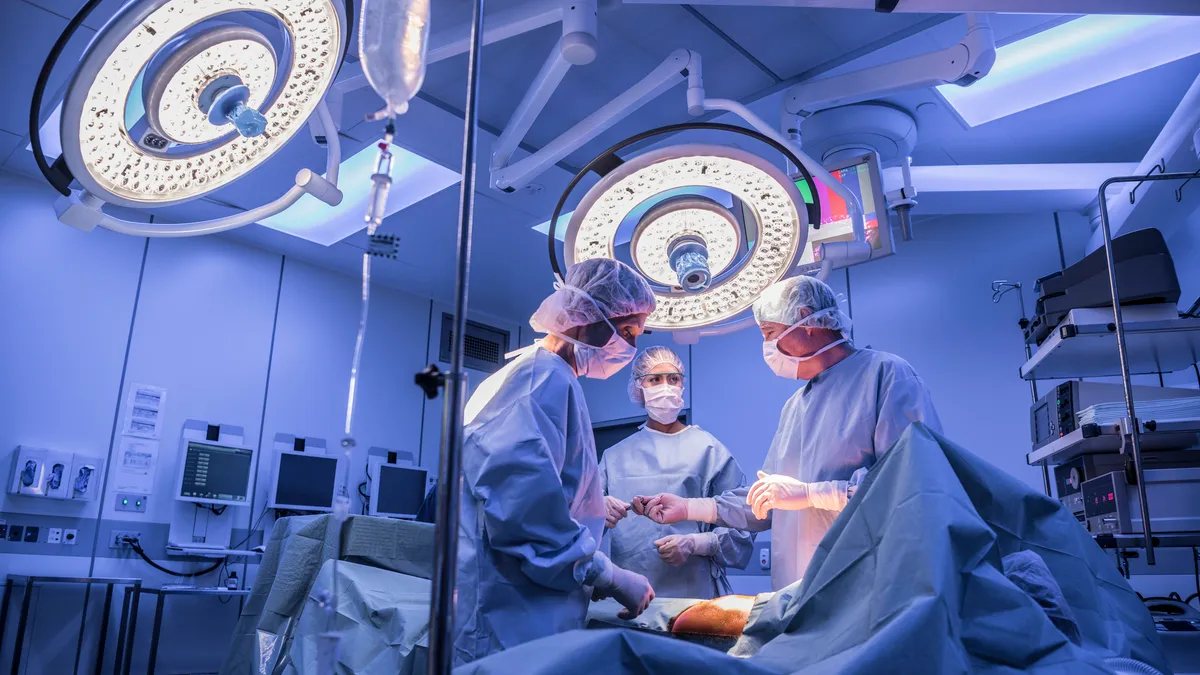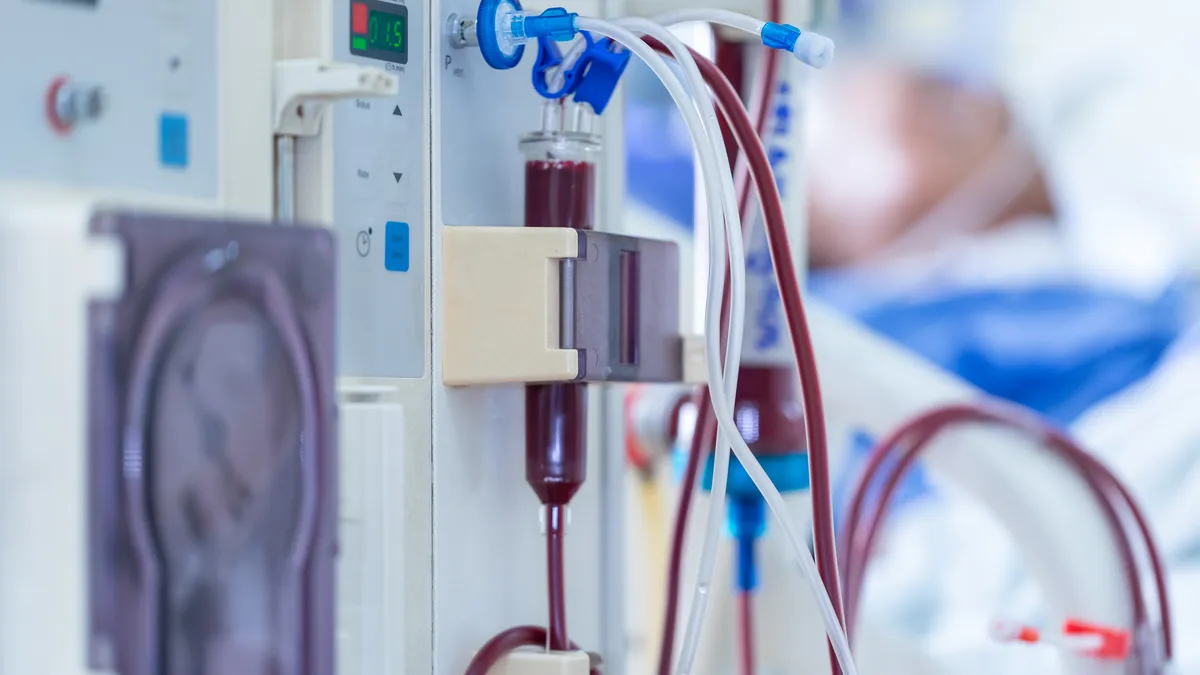The medtech industry entered 2020 celebrating the medical device tax's permanent repeal, a levy it spent the better part of a decade lobbying to kill.
But evergreen challenges in reimbursement and supply chain management weren't so nicely wrapped up. And collateral impact to medtech from the 2020 election and how hospital price transparency rules affect medical devices and other products remains to be seen.
Below are five live issues playing out in the industry this year.
An uncertain future for ethylene oxide sterilization
After a tumultuous 2019 in medical device sterilization, the Environmental Protection Agency is expected to publish proposed regulations on commercial ethylene oxide sterilizers in February.
At issue is how the government will balance protecting the public from the carcinogenic gas while maintaining access to a critical sterilization method used for more than half of all U.S. medical devices. EPA says it plans to work closely with FDA and other parts of government as it works to reduce emissions from commercial sterilization facilities across the country.
Suzanne Schwartz, director of FDA's Office of Strategic Partnerships and Technology Innovation, warned at an advisory committee meeting in 2019 that even one or two additional commercial sterilizer shutdowns would have catastrophic impacts on the medical device supply chain.
The medical device industry lobbied EPA Administrator Andrew Wheeler late last year to have the agency promulgate a proposal allowing sterilizers to upgrade abatement technology and come into compliance with the new regulations.
Reimbursement a top priority, with key CMS decisions coming
AdvaMed CEO Scott Whitaker told MedTech Dive reimbursement is the top priority for the trade lobby in 2020. Medical device manufacturers have long lamented what they call "a valley of death" between FDA granting marketing authorization and reimbursement by payers.
With CMS slated to soon establish a program to speed beneficiary access to breakthrough technologies that have "the potential to improve patient health outcomes and quality of care," the medical device industry could benefit.
CMS is also expected to release some key national coverage determinations in the coming weeks. They include a final NCD on next generation sequencing that will lift restrictions on the tests for patients whose genetics may put them at risk for developing cancer and those with earlier-stage cancers. Also coming down the pike is a draft NCD on transcatheter mitral valve repair, expected to be finalized in May.
Reality of EU MDR hits hard
Since the European Commission proposed revamping device oversight in 2012 and Parliament voted in 2017 to adopt the Medical Device Regulation, anxiety has grown about how to comply fully with stricter standards in time to continue sales in the bloc after the May 26, 2020, deadline.
Many of the complicating factors with transitioning over from the Medical Device Directive, in place since the '90s, have been out of device makers’ control. EU authorities are behind on releasing a number of implementing acts related to the regulation's rollout. Further, the number of notified bodies designated by the European Commission to certify devices under the new regulations (as of early January, there are nine) is fewer than were available in the MDD era, despite MDR requiring more devices to undergo notified body review.
For most major, well-resourced manufacturers, expenditures related to MDR compliance are "manageable," according to a Jan. 6 report from investment firm Jefferies, equating to less than 1% of global revenues.
But achieving CE marking by May is only part of the challenge, considering device makers must also comply with stricter postmarket expectations. As for companies involved in the diagnostics space, preparation for the twin In Vitro Diagnostic Regulation should continue throughout 2020 for the May 2022 implementation date. And for medtechs that have not yet commercialized their products, the EU may decreasingly be a region of first launch.
FDA's Breakthrough Devices Program matures
FDA's Breakthrough Devices Program turns five in 2020, if you count its origins as the Expedited Access Pathway. The voluntary program allows developers of devices or combination products that more effectively treat or diagnose "life-threatening or irreversibly debilitating diseases or conditions" to seek special status from the agency to have closer, more timely interaction with regulators throughout premarket activities.
Perhaps spurred by new guidance FDA issued on the program in December 2018, the number of devices designated under the program in 2019 reached 136, according to an FDA spokesperson. And as of last year, there's an additional incentive for manufacturers to engage in the program: a new reimbursement pathway from CMS that could allow certain breakthrough-designated devices to achieve coverage without meeting the typical substantial clinical improvement standard.
Because breakthrough designations are meant to be handed out before a device maker is ready to file a product submission with FDA, the number of breakthrough devices that have made it to market remains relatively small. Last year, FDA approved or cleared five breakthrough-designated devices. It awarded premarket approvals to a novel ear tube delivery system to treat recurrent ear infections, as well as an implantable pulse generator and a carotid sinus stimulator for heart failure patients; a 510(k) to a single-use duodenoscope meant to cut down on spread of infection; and a De Novo to a rapid diagnostic test for Ebola virus.
But last fall, Center for Devices and Radiological Health head Jeff Shuren said the number of breakthrough devices actually making it to market could spike in 2020, given that the product development and submission cycle will be further along for many designated devices.
A wave of C-suite changes
Several major medtechs will have fresh faces in their lead positions by year's end. Whether those changes — at some companies, the first in decades — meaningfully affect dealmaking or strategy by the end of 2020 remains to be seen.
Perhaps the most noteworthy change is at Abbott, with a new CEO and CFO come March. Retiring chief executive Miles White has led the company since 1998.
Likewise, BD and Medtronic have new CEOs lined up for late January and April, respectively. Like Abbott, the two companies made in-house hires. Smith & Nephew also has a fresh CEO for 2020; Roche veteran Roland Diggelmann is just a little more than two months into the job, replacing the prior CEO who had been there fewer than 18 months.
Other medtechs with very recent or forthcoming CEO changes include CMR Surgical, B. Braun Medical, TransEnterix, BrainsWay and T2 Biosystems. Qiagen is currently in search of a permanent CEO. Elsewhere in the C-suite, NuVasive recently appointed a former Mallinckrodt executive as its CFO.




















